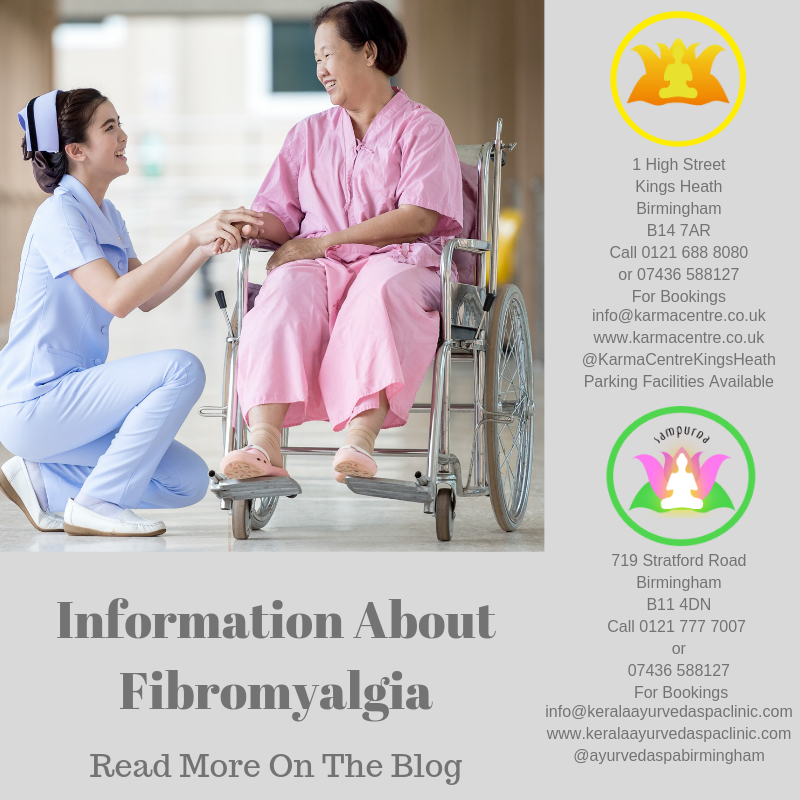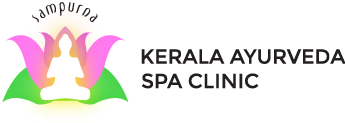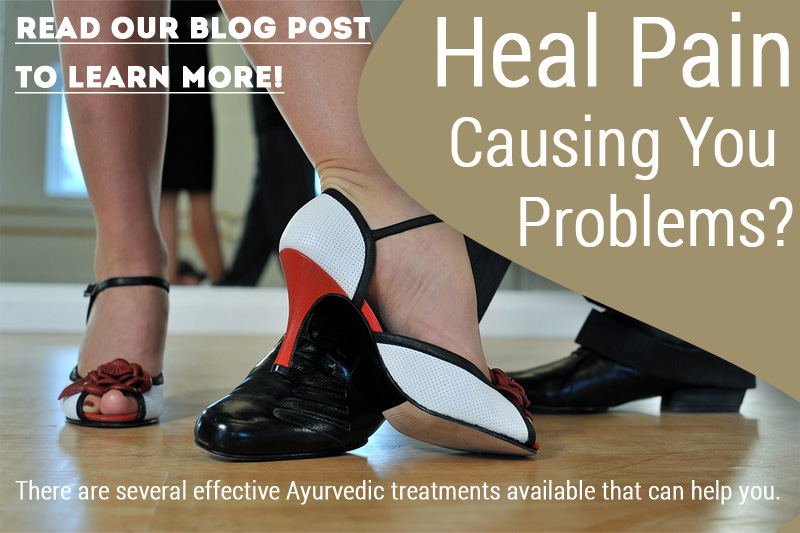
DEFINITION
Fibromyalgia is a chronic condition resulting from a variety of physical, mental and social influences.
SYMPTOMS
Fibromyalgia syndrome is characterized by pain & fatigue, cognitive and memory problems, sleep disturbances, morning stiffness, headaches, irritable bowel syndrome, painful menstrual periods, numbness or tingling of the extremities, restless legs syndrome, temperature sensitivity, Sensitivity to loud noises or bright lights.
CAUSES
According to Ayurveda, this condition is due to the imbalance of certain body energies, specifically within the muscles, tendons and ligaments. TREATMENT PLAN Ayurvedic approach to Fibromyalgia is through Detox (Internal Cleansing therapies), Diet, Herbs, Yoga – asana postures and Ayurveda flexibility exercises, Meditation & Stress Management, Therapies such as herbalized Oil Massage, Stress relief Massages, Exercise, Sleep, Making changes at work.
CONSULTATION
Fibromyalgia treatment in Ayurveda is based on diagnosis of the root-cause, the present health status and other associated complications of the patient.
DIET AVOID/REDUCE
– Sugar, Carbohydrates, Unhealthy fats, Alcohol, Gluten, Red meat, Fruits and vegetables in the nightshade family, such as tomatoes, white potatoes, green peppers, and goji berries, Dairy products, Eggs, Caffeine THERAPIES Massage the whole body gently with lukewarm sesame oil and follow with hot poultice bags. It is effective in relieving fatigue. YOGA Doing Yogasan and Sooryanamaskar strengthens the muscles and improve fitness and reduces stres.
SUPPLEMENTS Ashwagandha powder, Shatavari powder and Bala Root powder. 1 teaspoon of Dried ginger root, celery seeds and cumin seeds in equal quantities with rock salt to taste at bedtime.
UNCONTROLLABLE RISK FACTORS
Genetic Factors, Specific Lifestyle Factors, Psychiatric Illness, Autoimmune Diseases.
CONTROLLABLE RISK FACTORS
Proper food timings, light food and mainly vegetarian meals protect gastric fire and avoid production of toxins. Avoiding incompatible combinations like eating fish and milk together or milk and jaggery together is desirable. PREVENTION Self Help Yoga and Tai Chi, Managing your weight, Managing stress, Massages.
DISCLAIMER
This information is not intended for use in the diagnosis, treatment, cure or prevention of any disease. If you have any serious acute or chronic health concern, please consult a trained health professional who can fully assess your needs and address them effectively. If you are seeking the medical advice of a trained ayurvedic expert.
Here is a Testimonial from one of our patients:
Before Treatment
After Treatment








